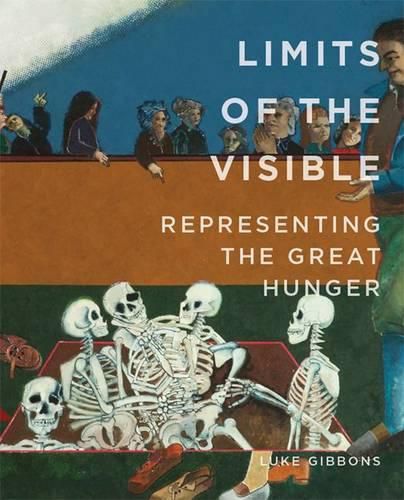Readings Newsletter
Become a Readings Member to make your shopping experience even easier.
Sign in or sign up for free!
You’re not far away from qualifying for FREE standard shipping within Australia
You’ve qualified for FREE standard shipping within Australia
The cart is loading…






Ireland’s Great Hunger Museum at Quinnipiac University publishes Famine Folios, a unique resource for students, scholars and researchers, as well as general readers, covering many aspects of the Famine in Ireland from 1845 - 1852 - the worst demographic catastrophe of nineteenth-century Europe. The essays are interdisciplinary in nature, and make available new research in Famine studies by internationally established scholars in history, art history, cultural theory, philosophy, media history, political economy, literature and music. This publications initiative is devised to augment the Museum experience, and is part of the Museum’s commitment to making its collection accessible to audiences of all ages and levels of educational interest. The booklets are produced to the highest level, beautifully illustrated with works from the Museum and related collections. It ensures that audiences have access to the latest scholarship as it pertains to both the historical and contemporary dimensions of the collection.The absence of photographs of the Irish Famine has been attributed to the shortcomings of a medium then it its infancy, but it may also be due to certain limitations in the visible itself. Susan Sontag argued that images can evoke sentimental responses but cannot address wider political questions of obligation and justice. Luke Gibbons revisits representations of the Famine, particularly those in Ireland’s Great Hunger Museum to argue that images can not only give visual pleasure but demand ethical interventions on the part of spectators. This fusing of sympathy and affective response with the right of redress is conveyed by a ‘judicious obscurity,’ a determination not to show all, which places an obligation on the spectator to complete what is beyond representation, or what is left to the imagination.
$9.00 standard shipping within Australia
FREE standard shipping within Australia for orders over $100.00
Express & International shipping calculated at checkout
Ireland’s Great Hunger Museum at Quinnipiac University publishes Famine Folios, a unique resource for students, scholars and researchers, as well as general readers, covering many aspects of the Famine in Ireland from 1845 - 1852 - the worst demographic catastrophe of nineteenth-century Europe. The essays are interdisciplinary in nature, and make available new research in Famine studies by internationally established scholars in history, art history, cultural theory, philosophy, media history, political economy, literature and music. This publications initiative is devised to augment the Museum experience, and is part of the Museum’s commitment to making its collection accessible to audiences of all ages and levels of educational interest. The booklets are produced to the highest level, beautifully illustrated with works from the Museum and related collections. It ensures that audiences have access to the latest scholarship as it pertains to both the historical and contemporary dimensions of the collection.The absence of photographs of the Irish Famine has been attributed to the shortcomings of a medium then it its infancy, but it may also be due to certain limitations in the visible itself. Susan Sontag argued that images can evoke sentimental responses but cannot address wider political questions of obligation and justice. Luke Gibbons revisits representations of the Famine, particularly those in Ireland’s Great Hunger Museum to argue that images can not only give visual pleasure but demand ethical interventions on the part of spectators. This fusing of sympathy and affective response with the right of redress is conveyed by a ‘judicious obscurity,’ a determination not to show all, which places an obligation on the spectator to complete what is beyond representation, or what is left to the imagination.